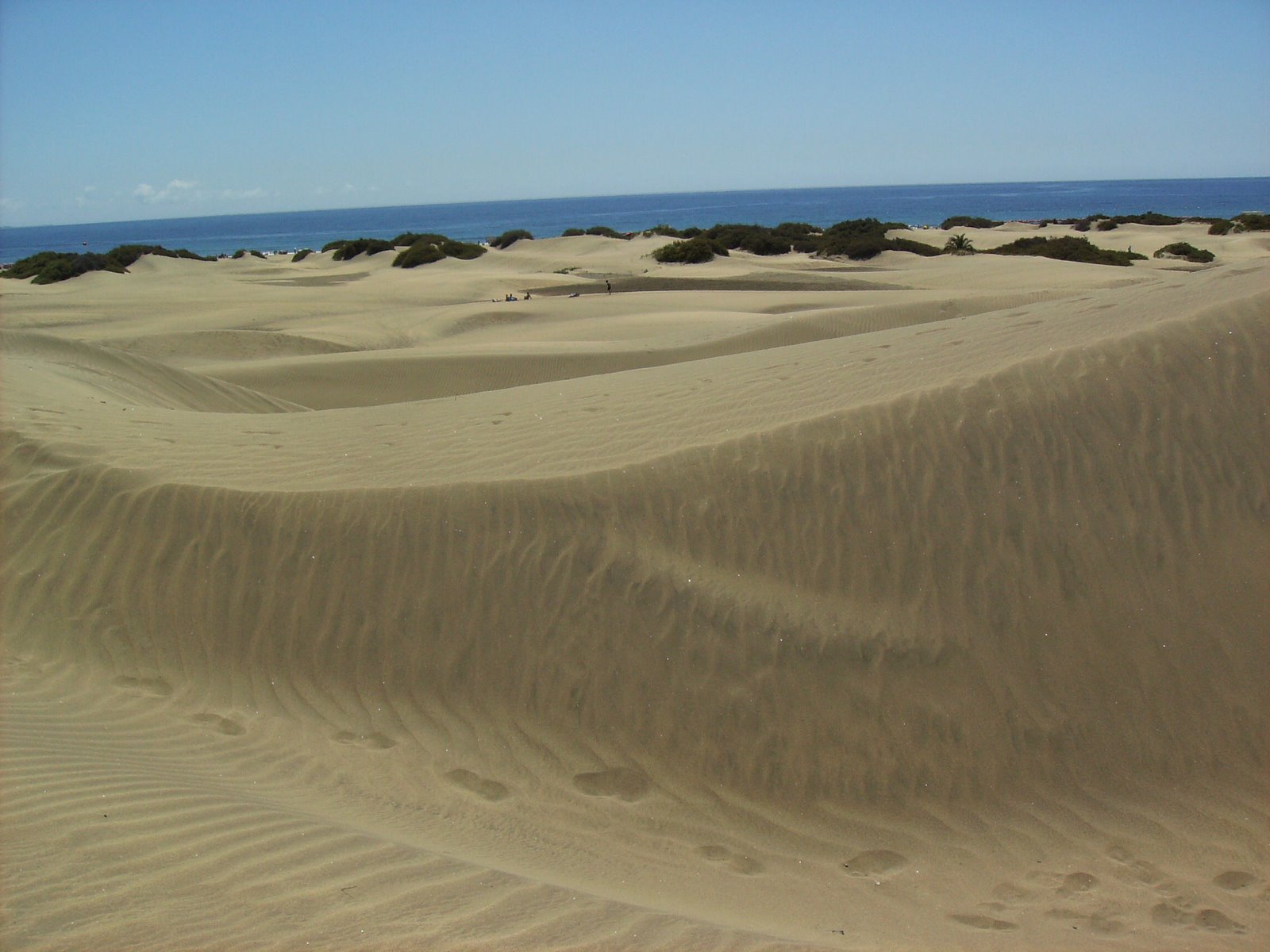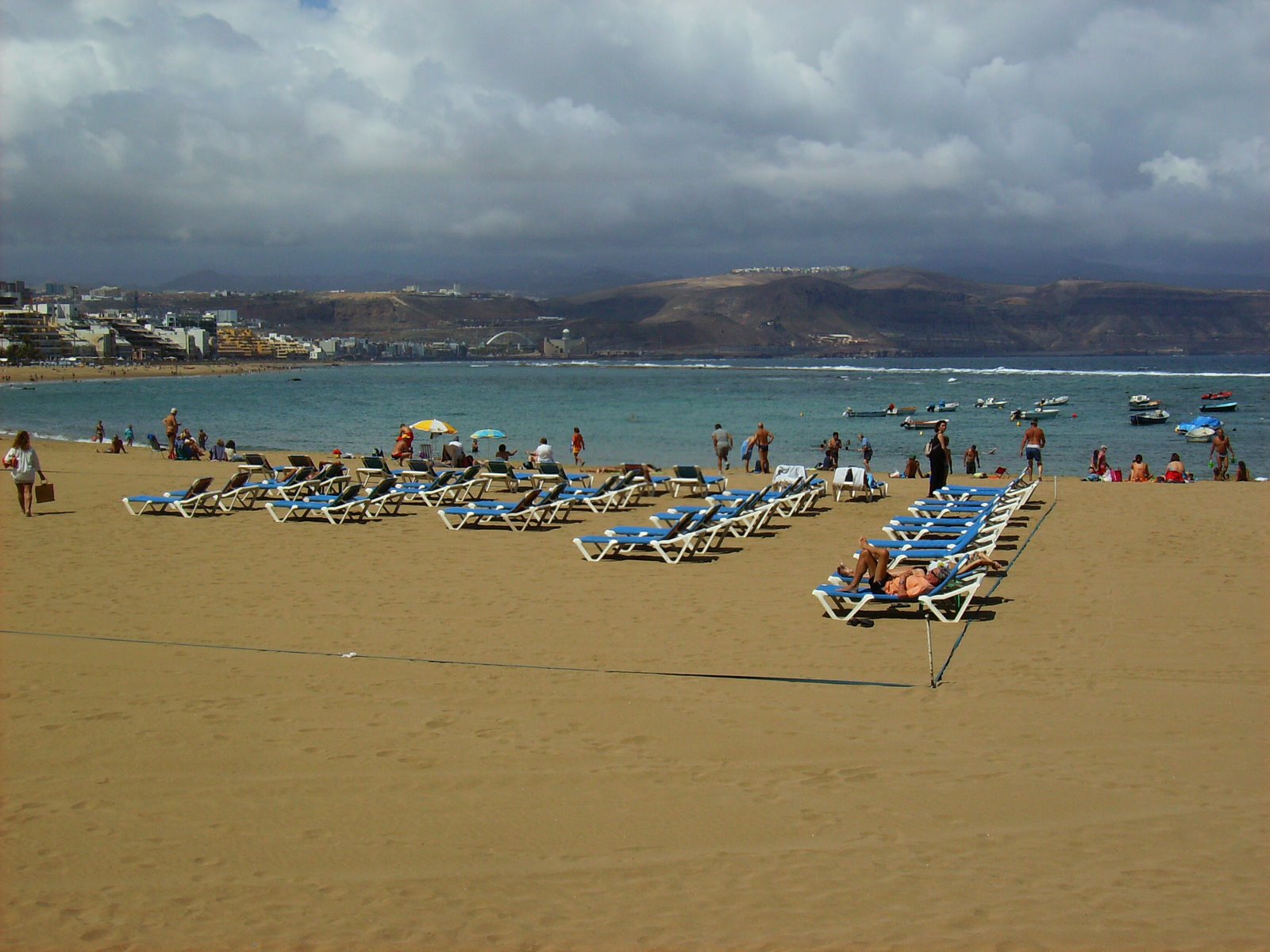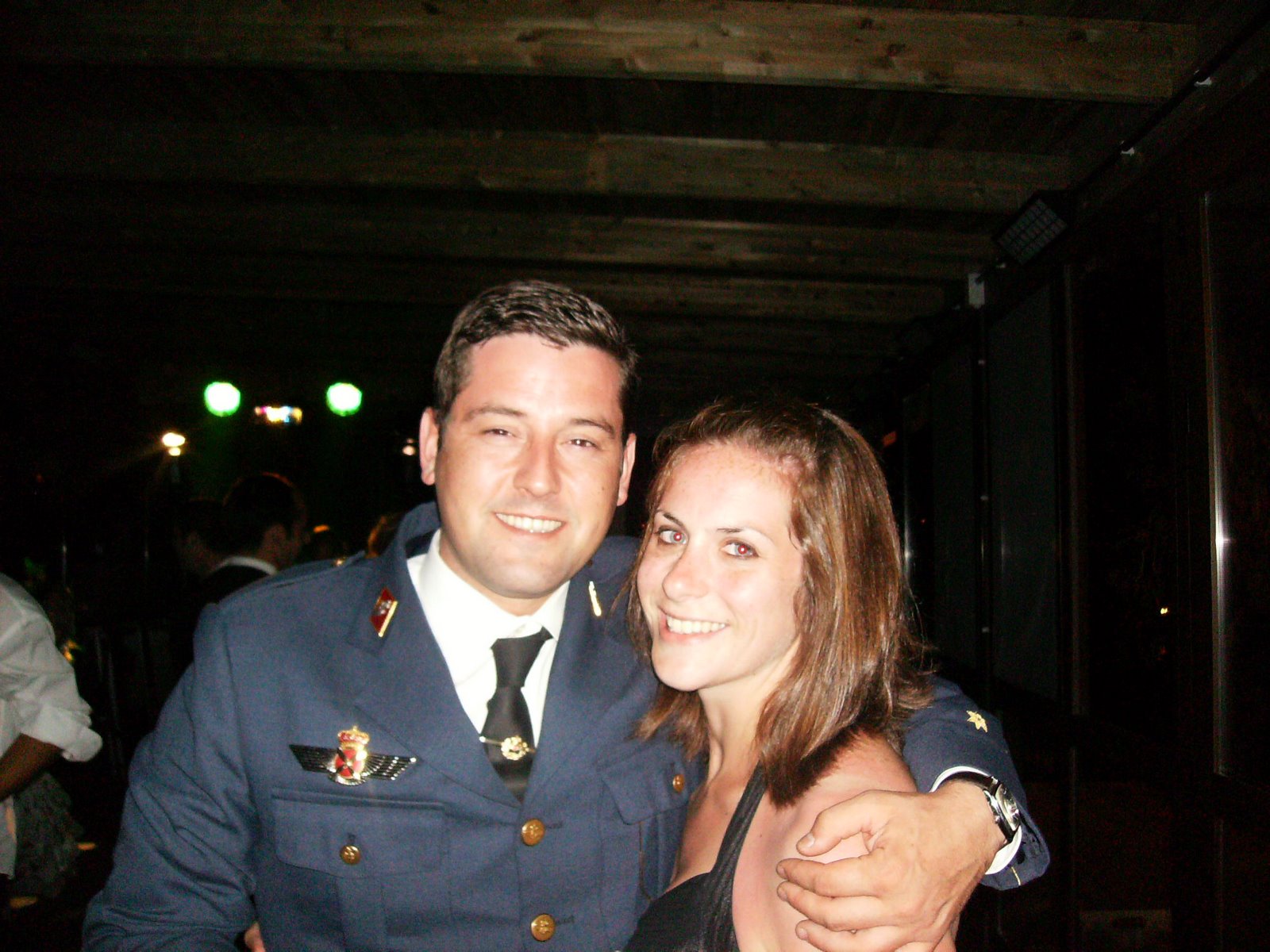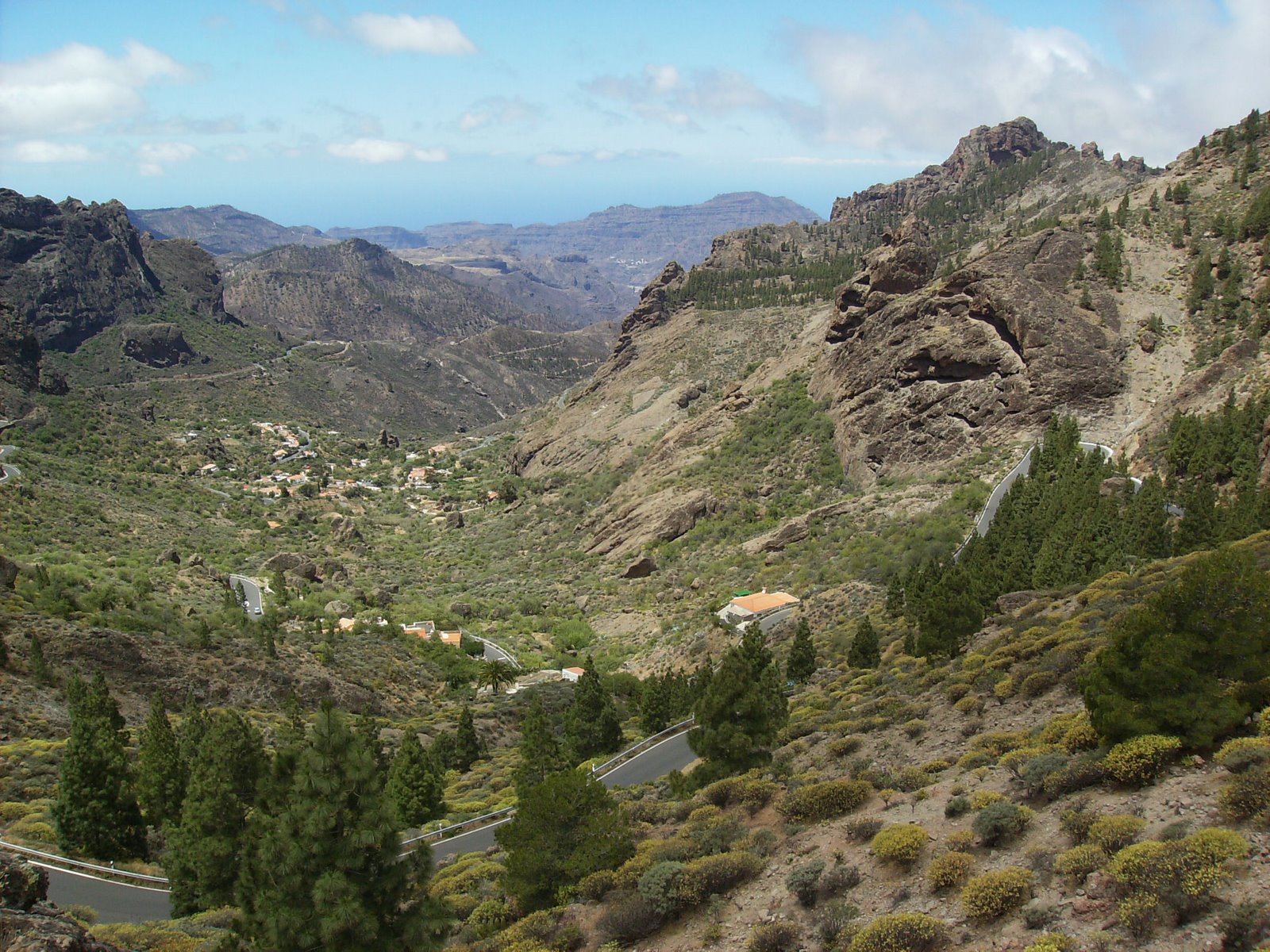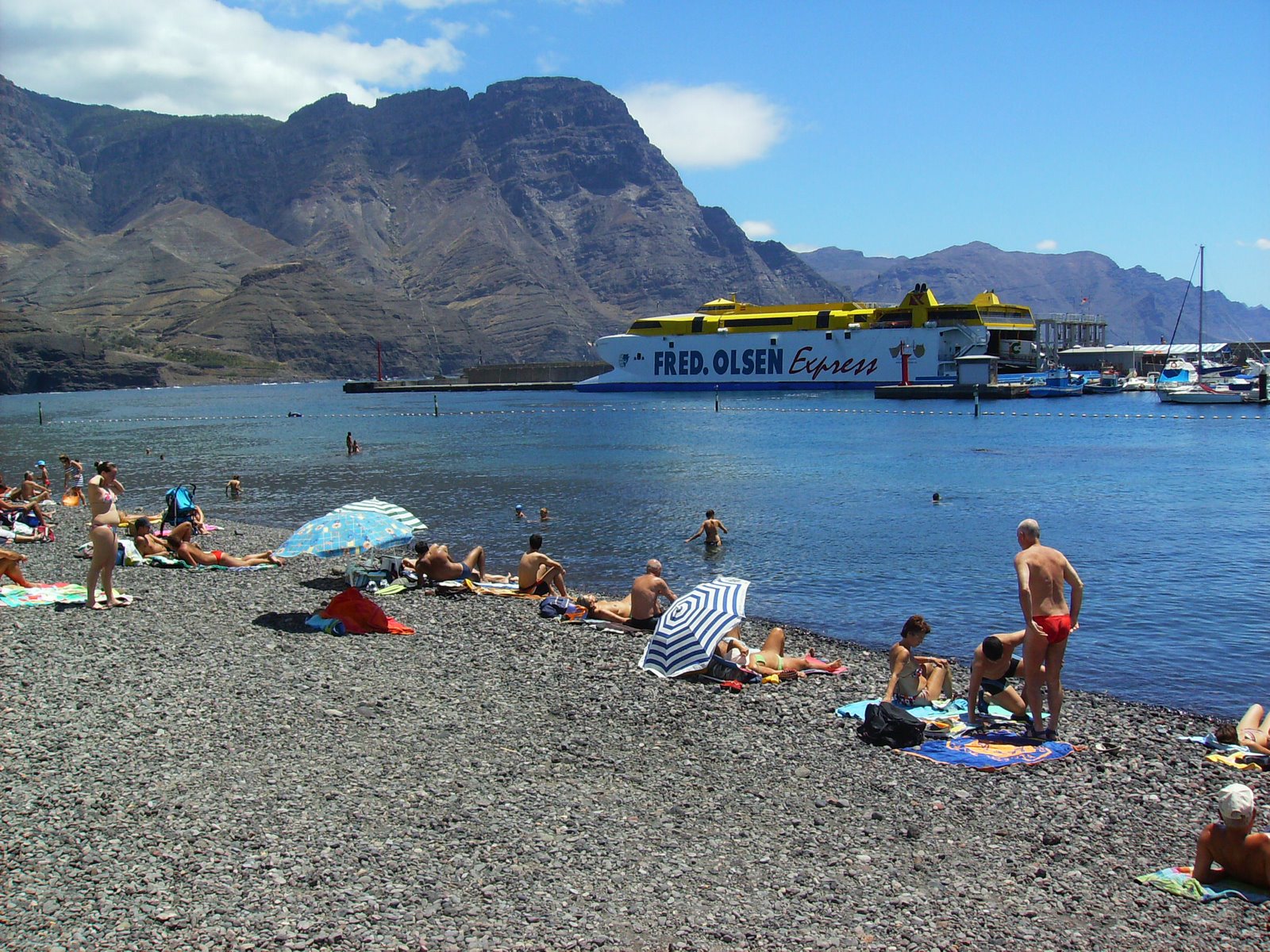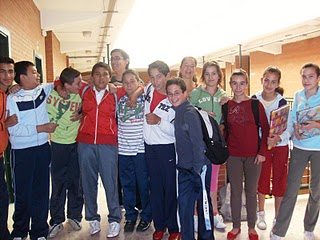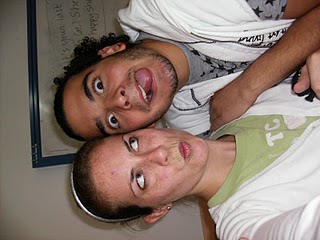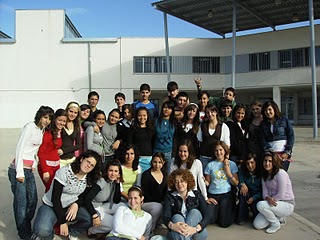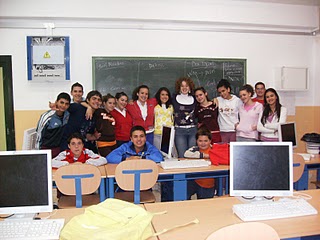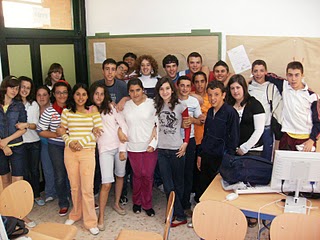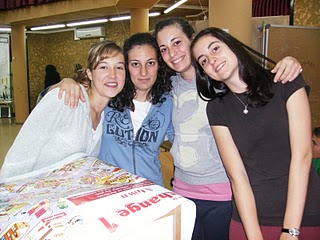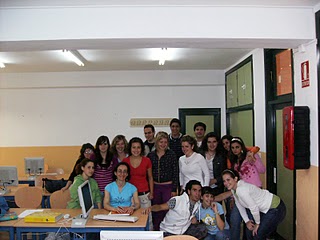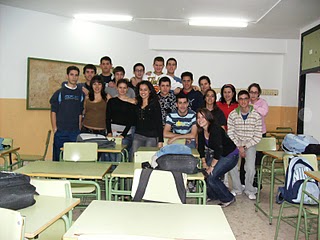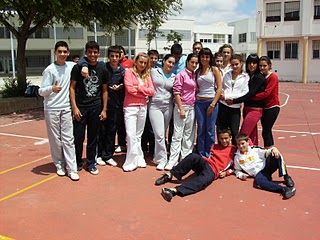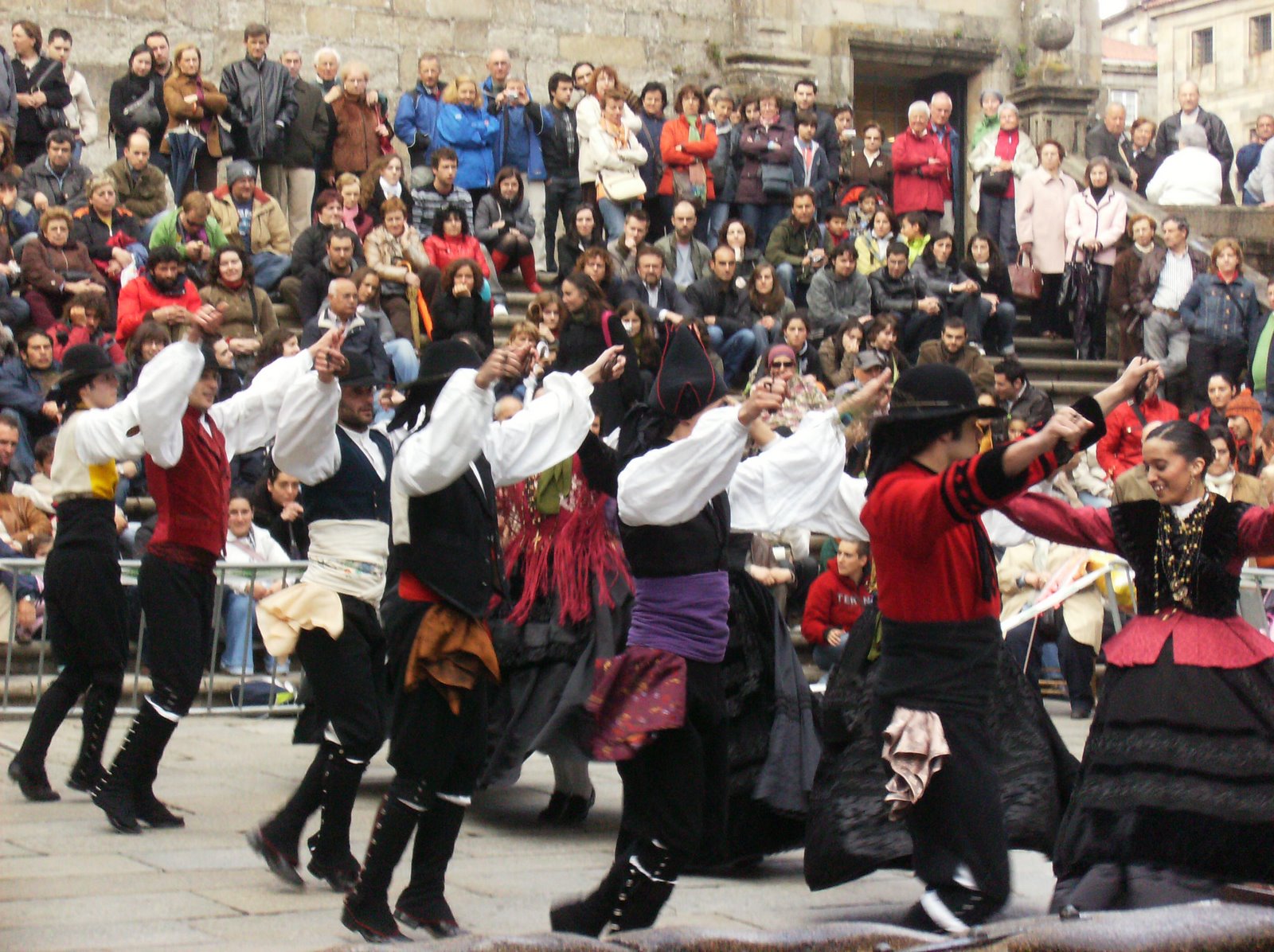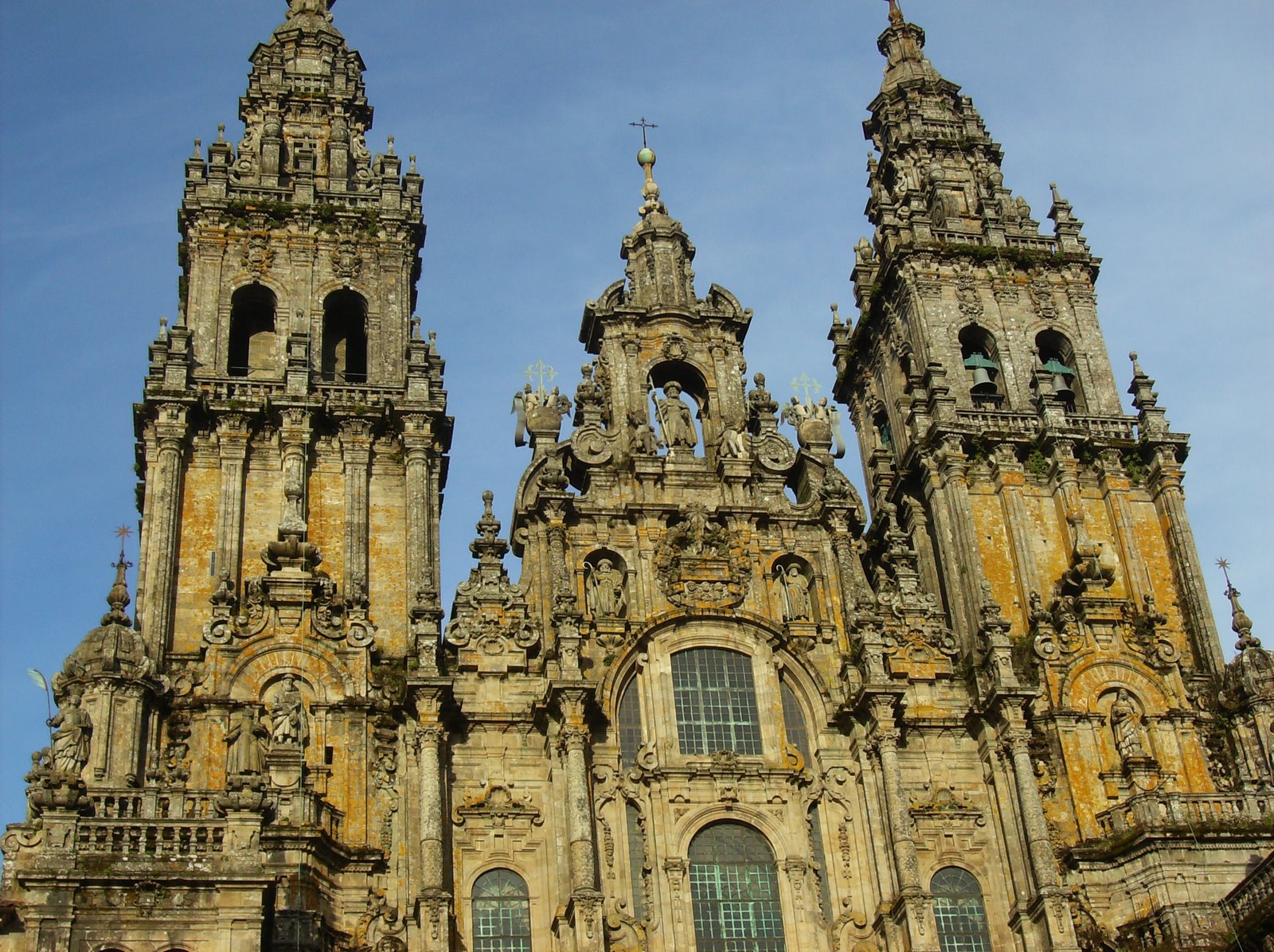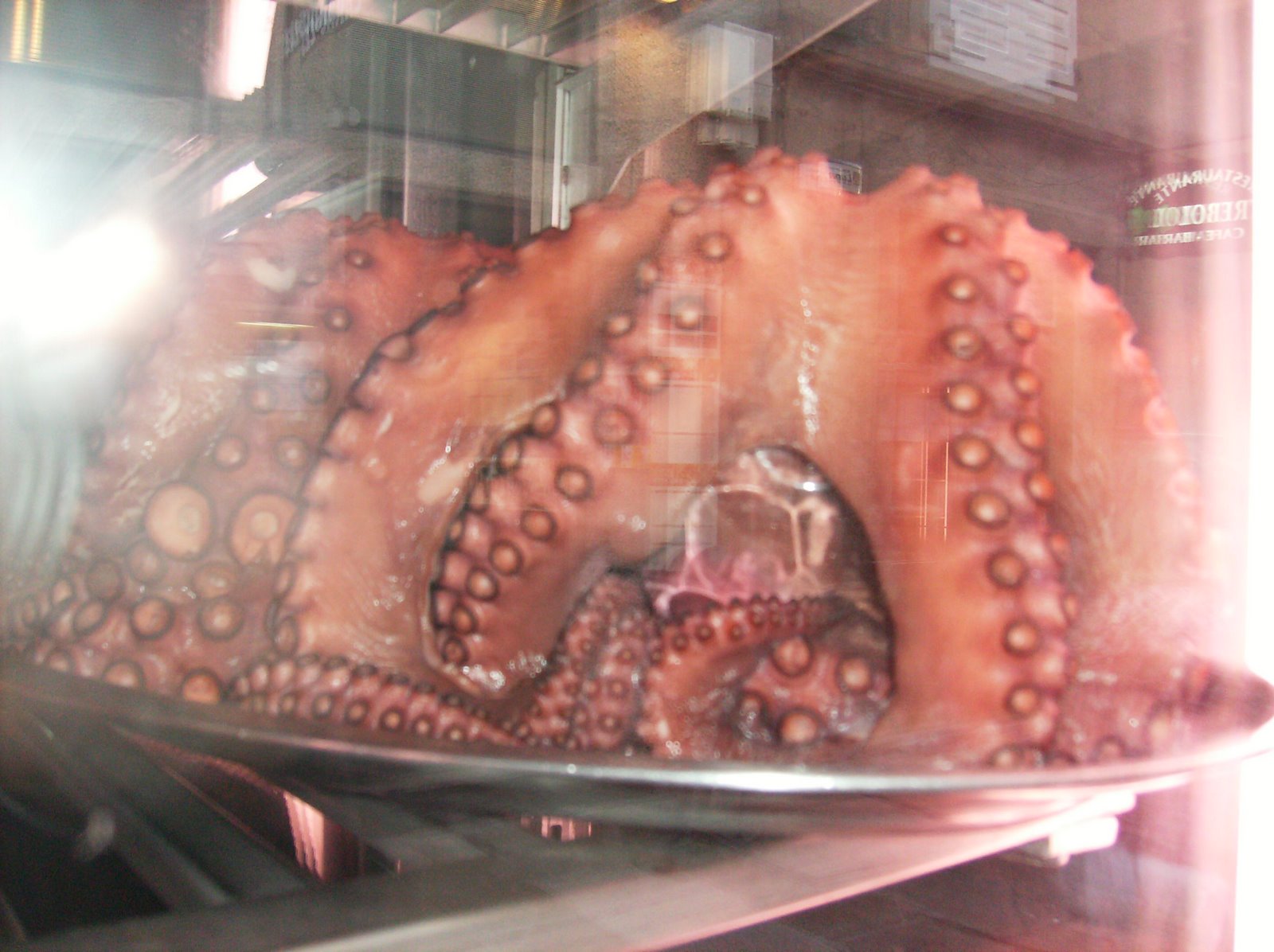The wedding was held in a gothic church in the mountain town of Arehucas, where the rum factory on the island is located. It was a bit funny having a massive stone cathedral amidst palm trees overlooking the ocean. The ceremony was short but I understood most of it and there was no mass, as is customary in Catholic weddings. Jose, the groom, later told me all he heard was his name, his wife’s name and the word ring and it was over. His bride, Patricia, looked gorgeous and I want my wedding gown to look like the one she wore – halter top, simple and perfect for her shape. The wedding was really small, but everyone took a big interest in me because I’m foreign and because Montero doesn’t keep girlfriend around for very long. For the reception, we piled into Gonzalo’s car and had to drive back down the mountains, into the city, up some more mountains only to find the highway the restaurant is on is closed all summer. Without a clear map and even less clear directions, we found ourselves in the middle of the countryside, between two valleys amidst sheep farms on narrow roads. It was like something out of the crossbreed of European Vacation and Life is Beautiful. We finally arrived at a gorgeous rural restaurant as the sun was setting, enjoying San Franciscos and tapas. Spanish weddings are more or less the same as American ones, with a few small modifications of cultural things (for instance, in the US, guests clink their glasses with a utensil to get the couple to kiss. In Spain, they sing a kooky song about being in love and kissing). I found I could converse to Kike’s friends and their fiancées better than I expected to, and I didn’t feel as left out as I thought I would. The dinner was delicious and the cake was AMAZING. I wish I hoarded some more. We were ushered into a small, glass room where the DJ played mostly all Spanish music, including a lot of song that were popular three years ago when I studied. I felt cool being able to sing, “Devuelveme la Vida” and dance the Chiki Chiki, Spain’s Eurovision Contest entry (sadly, it didn’t win).
The next morning, sufficiently hungover and exhausted from staying out all night, we left the hotel in our rental car and drove to the mountains, which start just outside the city. Driving past little villages perched over cliffs and flowers I’d never seen before reminded me a lot of Provence, where I traveled six years ago (geez, that makes me feel old!). But the going up and down and around sharp curves in a manual car made me really sick, and we had to stop a few times for me to get some air. The first time I also stepped in what I’m sure was donkey poop (and the Spaniards think that’s lucky! I should have found the ONCE man and bought a lottery ticket or something!) Our first real stop was Roque Nublo, one of the highest points on the island. Normally you can see Tenerife from that point, but the day was cloudy. I braved strange hissing noises to climb close to the rock, but didn’t bring shoes with enough sturdiness to make it past the end of the paved road. From there, it was back down the mountain and up yet another to Cruz de Tejada. Here, we stopped for a quick tapa and Kike tried to convince me to take a spin on a donkey named Margarita. I’m guessing she left me the poop to step in. By now, I felt like I’d seen most of the island, but instead we went to another town on the nearly barren western coast. Agaete is a really teeny town on the coast. Until three years ago, when tropical storm Delta rolled through, a strange rock formation called the Dedo de Dios (Finger of God) stood guarding a stone beach. Now, the city has literally nothing in it, save some seafood restaurants and vacation villas. It was beautiful and busy on a Sunday, with all of the blue and white colored streets full of people in bathsuits (most of them sunburnt foreigners like me!). We stopped to pause on a bench in the shade, where I fell asleep and Kike probably smoked a whole pack of cigarettes. Typical.
When I came home, Melissa asked me where I get all of this money to travel. While Kike paid the majority of everything, I told her that all of the money-making decisions I had to make last summer (aside from health insurance, car insurance, etc.) was put up against the question of, “Will this $3 be better spent in Spain?” and the answer was almost always yes. I didn’t move thousands of miles away to teach English because it sounded fun. In fact, it didn’t sound fun at all. I moved abroad to take advantage of cheap travel and see new parts of the world. Hell, I’ve lived in Spain collectively for more than 10 months and still have so much to see of one country! But I’ve taken advantage of every puente, every holiday and all the cheap flights I’ve found to explore. On my list for next year? First Amsterdam to visit Martin, back to the east side of Germany, perhaps Copenhagen to see Anette, London to visit my cousins and I’d love to still see Croatia, Prague, Vienna, Switzerland and France again (after all, it isn’t a trip to Europe if I haven’t been to France!). But, now I stash my passport away and relieve my wallet a bit until I’m back in the USA in two weeks.
Un fuerte abrazo to all of you who have kept up with me the last 8.5 months.
